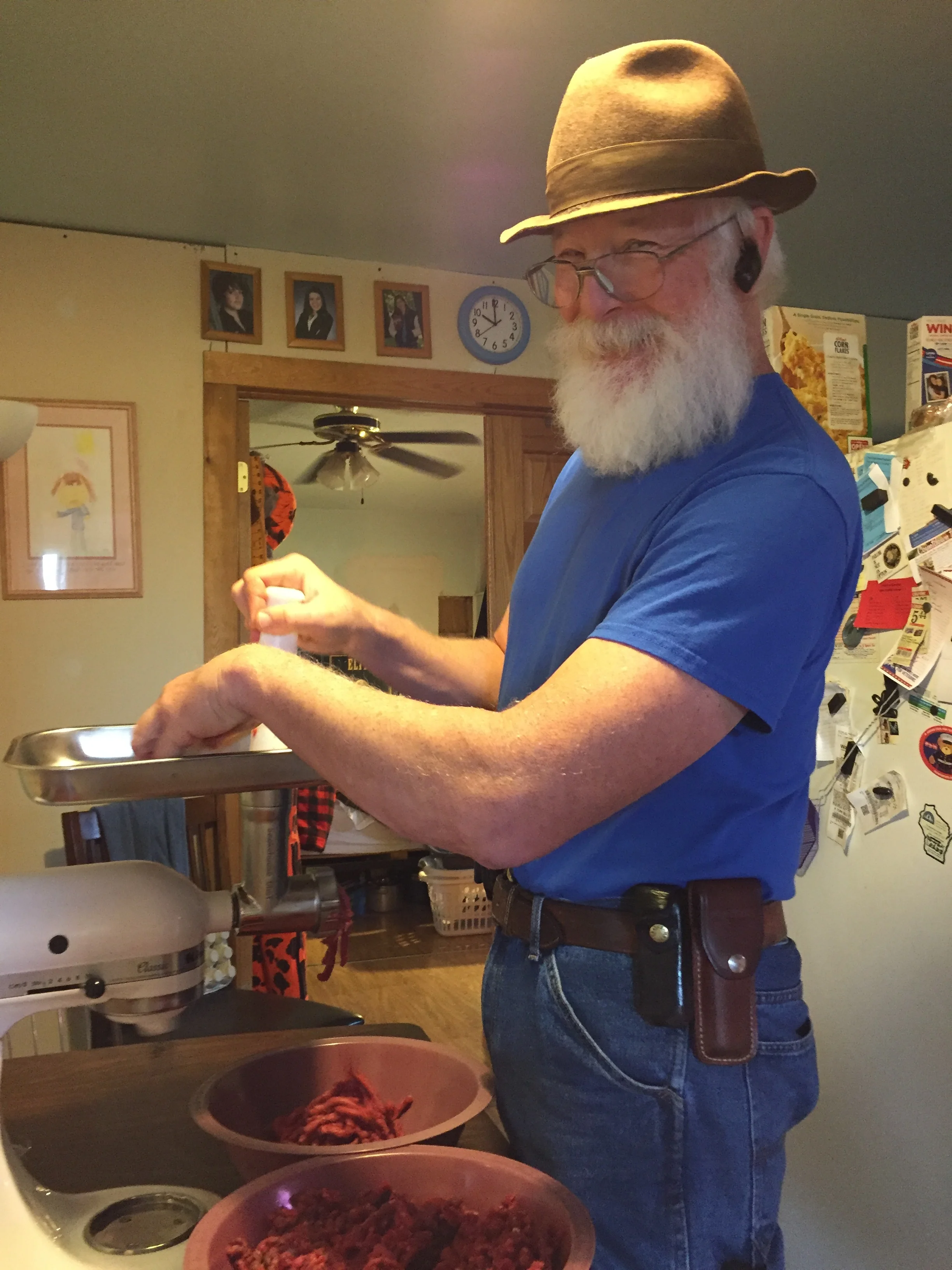Harvest journal: 5 out of 8 is more than enough
Today is the last day of firearm deer hunting season here in Western Wisconsin, but in truth we all stopped hunting on Day 2. By that time, out of the 8 deer we had licenses for between the 4 of us hunting on our land, 5 tags were filled. Brother Johnny took his two deer back to Minnesota with him, and we processed son-in-law Nick's buck for him, sending him back to Iowa with 52 pounds of tenderloin, roasts, stew meat and hamburger.
Grinding the last of the hamburger.
That left us with 2 deer to take care of ourselves. And here is how we did it:
Michael was in charge of outdoors operations (and I do mean the kind that requires sharp cutting instruments!) while I did the inside work. After a deer is shot and field dressed, we hang it up by the neck and place a board or stick inside the cavity so that cold air can circulate and cool down the meat. This prevents spoilage.
"Field dressing" means opening the deer from sternum to the pubis, cutting through the bony girdle so that the hips can splay. You cut through the trachea and the hide around the anus and take out all the viscera, saving the heart and liver in the zip lock bag you have thoughtfully stored in your pocket for such an occasion. Then you get to drag your deer from the woods up to the house. If you are lucky, your hunting partner helps out with this bit. When you've caught your breath, you register the deer, which happened on-line this year.
Last year, we didn't get to process our deer immediately, and the weather turned very cold. This made getting the hide off the deer a major effort involving blow-driers and gymnastics. Vowing to avoid the problem this year, Michael skinned the deer, quartered them and then hung the quarters in the garage, where we had made space. He would then cart in a joint to me inside.
Once inside, I took meat off the bones and cut fat and excess connective tissue from the meat. I then cut the meat into steaks, stew meat, roasts, meat to grind into hamburger, and thin-sliced the hearts and took the membrane off the livers before slicing them up.
We can process one deer in a day, if we work 10 hours in a day. This includes taking time out to re-sharpen knives, and drink the occasional cup of coffee, but meals extend the day.
Our favorite field dressing knife: fixed blade drop point
Good knives are very important to this process.
From left to right: chef knife, skinner, boner.
Having a grinding attachment for our mixer is also a huge labor saver. We pile hamburger trimmings on cookie sheets lined with waxed paper and let the meat become semi-frozen before grinding it. This lets the grinder cut the sinews rather than have them get wound up in the grinder. We save the hamburger grinding for after dinner (about the time it takes to super chill the meat), at which time Michael puts the meat through the grinder twice, and I weigh and package the hamburger. Then I get to find the space in our freezer to store it!
Last year we ended up with 65 pounds of processed meat. This year we have 84 pounds of venison in our freezer. The difference may be in the size of the deer, but also the loss of meat due to the super cold weather.
Last year the neighbor who rents our land had hay planted. This year he planted corn. This fall has been a lot warmer than last fall. Whatever the factors, the bucks this year had noticibly more fat on them than in years past. They also all had broken antlers. As a final oddity, the single doe we harvested was still lactating. That is a sample size of one, which is meaningless. Yet, observing differences, such as increased competition (all those broken antlers) and increased resources (more high-calorie food and warm weather) is fascinating.


